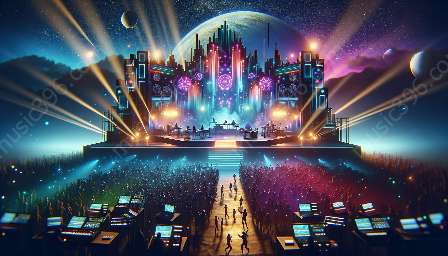Electronic music encompasses a wide range of sub-genres, each with its own unique characteristics and influences. From ambient and techno to house and trance, the diversity within electronic music is vast and continues to evolve.
Key to the development and promotion of electronic music are the DJs, who play a crucial role in shaping the industry and creating memorable experiences for their audiences. Let's delve into the fascinating world of electronic music and the sub-genres that define it.
The Role of DJs in Electronic Music
DJs are central figures in the world of electronic music. They play a vital role in introducing new sounds, mixing tracks, and creating immersive experiences for their audiences. Their ability to curate music, blend different genres, and adapt to diverse crowds makes them integral to the electronic music scene.
With the rise of electronic dance music (EDM) and the global expansion of music festivals, the influence of DJs has grown significantly. They are often seen as trendsetters and tastemakers, shaping the direction of electronic music as they introduce audiences to new sounds and sub-genres. Furthermore, with the advent of technology, DJs have become producers and collaborators, extending their influence beyond the DJ booth.
Electronic Music Sub-genres
1. Ambient: Ambient electronic music focuses on creating atmospheric and immersive soundscapes. It often incorporates elements of nature, minimalistic melodies, and gentle rhythms, providing an introspective and calming experience for listeners.
2. Techno: Known for its pulsating beats and repetitive patterns, techno is a high-energy sub-genre that originated in Detroit, Michigan. It is characterized by its use of synthesizers, drum machines, and a relentless focus on rhythm and groove.
3. House: House music emerged from the underground club scene in Chicago and New York City. With its infectious grooves, soulful vocals, and uplifting melodies, house music is designed to make people dance and celebrate. Its sub-genres include deep house, tech house, and progressive house.
4. Trance: Trance music is defined by its euphoric and uplifting melodies, often featuring strong build-ups and climactic drops. It creates a mesmerizing and emotional journey for listeners, immersing them in its hypnotic rhythms and ethereal melodies.
5. Drum and Bass: Originating from the UK, drum and bass (DnB) is known for its fast-paced breakbeats, deep basslines, and intricate rhythms. It has a strong emphasis on sub-bass and high tempos, creating an energetic and intense listening experience.
6. Dubstep: Characterized by its heavy basslines, syncopated rhythms, and aggressive sound design, dubstep emerged from the underground electronic music scene in the UK. It has gained international popularity and has influenced various other genres.
7. Electro: Electro music is rooted in the use of electronic instruments and synthesizers. It often features robotic vocals, futuristic sounds, and a retro-futuristic aesthetic, drawing inspiration from science fiction and technology.
8. Ambient Techno: As a fusion of ambient and techno, ambient techno combines the atmospheric elements of ambient music with the rhythmic structures of techno, creating a unique blend of introspection and danceability.
9. Acid House: With its distinctive use of the Roland TB-303 synthesizer, acid house is characterized by its squelching and resonant sound. It has played a pivotal role in the development of electronic dance music.
Impacts of Electronic Music on Modern Culture
Electronic music has had a profound impact on modern culture, influencing not only music but also fashion, art, and technology. The sub-genres within electronic music have contributed to the evolution of club culture, the rise of dance music festivals, and the integration of electronic sounds in mainstream pop and hip-hop.
Through the innovative use of technology and sound manipulation, electronic music has pushed the boundaries of creativity and experimentation, inspiring a new generation of artists and producers. Its influence can be seen in diverse fields, from film soundtracks to advertising, showcasing the versatility and adaptability of electronic music.
In conclusion, the world of electronic music is a rich tapestry of sub-genres, each contributing to the overall evolution of the genre. DJs play a pivotal role in this ecosystem, serving as ambassadors for electronic music and pushing the boundaries of sonic exploration. As electronic music continues to evolve, it serves as a testament to the power of innovation and the transformative nature of sound.


